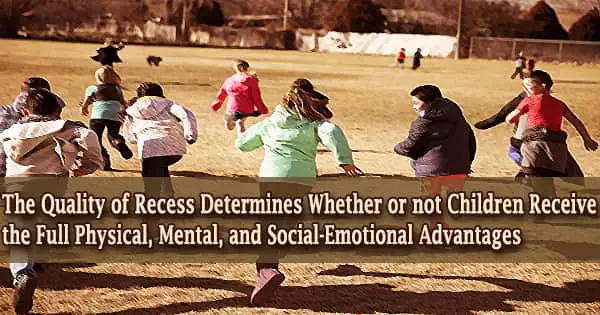According to a recent study from Oregon State University, the quality of recess, not simply the quantity of time spent away from the classroom, plays a big impact in whether children reap the full physical, mental, and social-emotional advantages of break.
“Not all recess is created equal,” said William Massey, study author and an assistant professor in OSU’s College of Public Health and Human Sciences. With schools returning to full-time in-person classes this fall, he said, “Now is a good time to rethink, ‘How do we create schools that are more child-friendly?’ I think ensuring quality access to playtime and space during the school day is a way we can do that.”
During the 2018-19 school year, Massey’s study, which was published this week in the Journal of School Health, comprised in-person monitoring of third and fifth-grade kids in 25 schools across five states. The schools represented a diverse spectrum of socioeconomic statuses as well as racial and cultural groups.
Researchers looked at whether the schoolyard provided physical and environmental safety, if kids had opportunities to play and had the necessary space and equipment, whether there were possibilities for inclusion, and whether they had a variety of play alternatives.
“A safe space with basic playground equipment might seem like a given, but that’s not always the case,” Massey said.
“I’ve been on playgrounds where the kids go outside, and it’s a parking lot with high fences, no play structure, no balls, no jump-ropes, no chalk they’re literally outside, and there’s nothing to do,” he said. He has also seen large holes from construction, broken glass, used condoms and needles in play spaces.
There was a link between high-quality recess and improved student resilience, self-control, adaptive classroom behaviors, and executive function.
William Massey
Researchers also observed adult conduct on the playground, as well as student behavior and the prevalence of verbal and physical confrontation, as well as dispute resolution.
“A lot of my previous research shows that adults are one of the most important entities on the playground,” Massey said. “One of the most important things is: Do adults model and encourage positive interactions with the students, and do they actually engage with the students themselves? At recess, the more adults interact with and play with students, the more children play, the more physical activity there is, and the less tension there is.”
Positive classroom conduct and socio-emotional indicators were linked to schools that scored well on these measures. According to Massey, there was a link between high-quality recess and improved student resilience, self-control, adaptive classroom behaviors, and executive function.
Based on these findings and his earlier study on recess, Massey contends that schools should view recess as an important component of the school day, devoting sufficient time and resources to it.
He claims that schools don’t need pricey play structures to do this. Simple, low-cost initiatives such as having an adult clear the playground every morning or ensuring that the soccer field is already set up so that students can make the most of even 10- or 15-minute recess intervals would make a significant impact.
As schools recover from the pandemic, Massey believes there is a chance for teachers to recognize the importance of children’s social and emotional development, as well as their need for play. However, some teachers may feel compelled to cram all of the missed content from the previous year into as little time as possible.
“I would argue that’s a huge mistake. Kids don’t have the capacity to come in stressed and traumatized and out of the rhythm of school, and have all that dumped on them,” he said. “These findings show that recess is not detrimental to what we want to see in the classroom, but rather, it’s complementary.”















